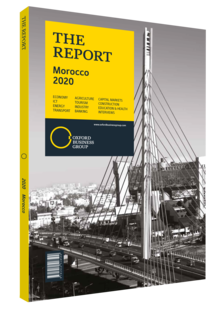Omar Sayarh, Managing Partner; and Mehdi Megzari, Partner, Dentons Sayarh & Menjra Law Firm: Viewpoint

Viewpoint: Omar Sayarh
Law No. 104-12 relating to freedom of prices and competition, instituted by Dahir (royal decree_ No. 1-14-116 on June 30, 2014, its application Decree No. 2-14-652 and Law No. 20-13 relating to the Competition Council instituted by Dahir No. 1-14-117 of June 30, 2014, are now fully in force since the publication of the list of the new members of the Competition Council in the Official Gazette on December 13, 2018, putting an end to the confusion regarding the applicability of the provisions of the new competition legal framework.
The new competition legal framework has strengthened the role of the Competition Council by making it a decisional administrative authority and by giving it a power of sanction, notably regarding anti-competitive practices and merger control. The council ensures the compliance of the economic operators with the principle of freedom of competition, by monitoring anti-competitive practices and economic concentrations.
However, in practice, some operators experience the Moroccan merger control procedure as an obstacle to doing business. Indeed, the new legal framework transferred the competence and decisional powers from the office of the Head of the Government to a currently under-resourced Competition Council that must examine and rule on important contemplated mergers due to the drafting of Law No. 104-12.
Under Law No. 104-12, a transaction is considered a merger when two or more previously independent companies merge and/or when one or more individuals already hold control of at least one company; or when one or more companies, acquire, directly or indirectly, whether by acquisition of interests in the share capital or by purchase of assets, by contract or by any other means, control of the whole or part of another company, or of the whole or parts of several other companies. The aforementioned control should be understood as the possibility offered to a company to exercise a decisive influence on the activities of another company, such as veto rights/unanimous votes on important matters in the concerned company’s board or general meetings, a right of ownership or use of the concerned company’s asset, among others. Moreover, the establishment of a joint venture can also be considered, under Law No. 104-12, as a merger.
Contrary to EU control regulations, the practice of non-cumulative thresholds, with respect to merger or acquisition transactions, triggering a notice sent to the Competition Council was added by Law No. 104-12 to the existing criterion of a local market share equal to or exceeding 40% owned by the parties concerned by these transactions. Thus, a merger control is triggered if one of the following thresholds is met. The aggregate worldwide pre-tax turnover of all of the parties concerned (companies or group of individuals or legal entities) exceeds Dh750m ($78m); or the pre-tax turnover achieved in Morocco by at least two of the parties concerned (companies or groups of individuals or legal entities) exceeds Dh250m ($26.1m); or the combined market share in Morocco is equal to or exceeds 40%.
The first threshold added by the new legal framework may be confusing. It should be recalled that purely foreign-to-foreign transactions are caught under the Moroccan merger control rules only when consistent with Article 1 of Law No. 104-12; that is to say, when such transactions have the purpose or may have an effect on competition in the Moroccan market or a substantial part of it. However, in practice, an effect on competition in the Moroccan market could be characterised by a simple presence in Morocco and therefore delay some worldwide transactions with no significant impact on the relevant Moroccan market.
It would be useful to either reconsider the application of non-cumulative thresholds and switch to cumulative criteria or increase the new threshold, but only if and when consistent with Article 1 of Law No. 104-12. The second threshold should also be more explicit by stating that the pre-tax turnover should be the one achieved by at least each of the two the parties concerned.
You have reached the limit of premium articles you can view for free.
Choose from the options below to purchase print or digital editions of our Reports. You can also purchase a website subscription giving you unlimited access to all of our Reports online for 12 months.
If you have already purchased this Report or have a website subscription, please login to continue.

